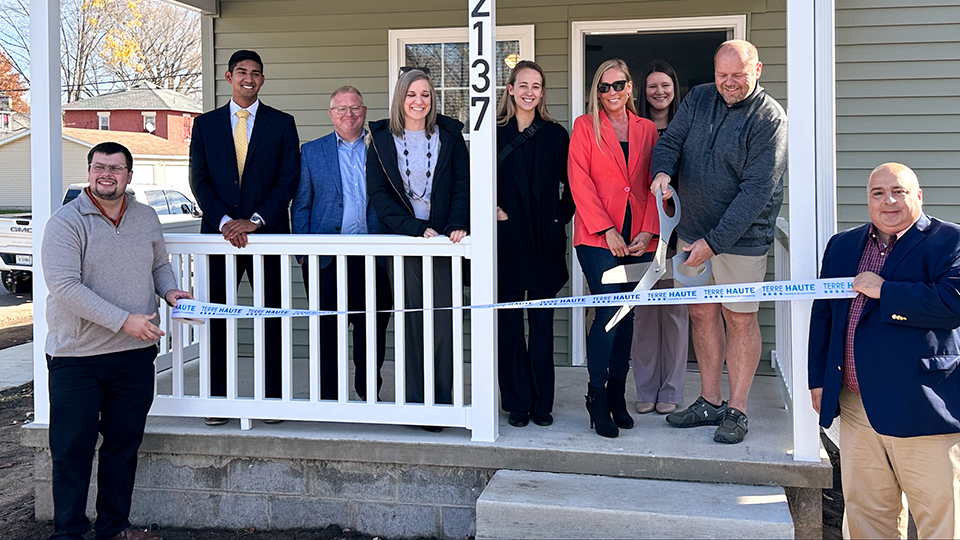Housing project expanding in west central Indiana
Subscriber Benefit
As a subscriber you can listen to articles at work, in the car, or while you work out. Subscribe Now
VIGO COUNTY, Ind. - The economic development organization for west central Indiana is using a $10 million allocation to continue its effort to increase housing development in the region.
Thrive West Central launched a pilot of its Homes for the Future initiative last year, which has led to the construction of about 150 new homes to date.
CEO Ryan Keller said the success of the pilot led to the Vigo County Council and Terre Haute City Council approving $10 million in American Rescue Plan Act funds to support the program over the next five years.
Keller told Inside INdiana Business the region, like many communities, has been building under its potential for many years.
“We start to look at all the different parts of the housing ecosystem, and we start to address them [and] start to build the right kind of products that consumers are looking for. Those other products could be apartments, maybe they’re condominiums, maybe they’re duplexes,” Keller said. “And so we look at what the market potential is for all of those products and all of those price points, and then we get everybody starting to have the intentional conversations to work together to say, ‘Okay, how do we build this set of products at this price point, and these locations?'”
The pilot program was launched using $1.8 million in Regional Economic Acceleration and Development Initiative, or READI, funding from the Wabash River Regional Development Authority.
The program allowed developers and homebuilders to apply for funding to cover up to $245,000 of building costs for projects in Clay, Parke, Sullivan, Vermillion and Vigo counties.
Keller said the goal of the program is to help fill a funding gap for builders and developers, especially after infrastructure and material costs have gone up exponentially over the last year. That, combined with data on housing needs from New Jersey-based Zimmerman-Volk Associates, spurred developers to take action.
“We put together a really great program that allowed the builders to de-risk by, one, having the analytics information and then having bankers also have that, and two, then being able to put together special programs around the infrastructure to cover some of that gap,” Keller said. “So, we started seeing rapid interest and rapid development with that pilot program right off the bat.”
Thrive West Central cut the ribbon the first home built under the program last fall, and there is still more READI funding to be dispersed for more projects.
Keller said the county and city were eager to expand the program using ARPA dollars, especially as an effort to boost population growth and increase per capita income.
“When you think about the greater community overall, its population increase, it’s growing and securing your tax base, it’s raising the per capita, it helps with education in schools,” Keller said. “There’s all of those large community benefits. It creates a more diverse community, more thought, more philanthropy, more quality-of-life initiatives, so on and so forth. So it has a really great cascading effect.”
Keller said the goal for the expanded program is to build approximately 4,500 to 6,000 housing units over the five-year period.
“Housing is a key issue facing Hoosiers across the state. Terre Haute is committed to rebuilding its neighborhoods block-by-block and brick-by-brick,” Terre Haute Mayor Brandon Sakbun said in written remarks. “This program helps us build back better.”
Thrive West Central has a monthly Request for Proposals online for builders and developers to apply for funding through the Homes of the Future initiative.
“We look at each project through a competitive RFP process,” Keller said. “Then we help that builder and that developer find what the right mixture of housing should be based on infrastructure costs, and it really does become a good long term partnership that way.”
You can learn more, including accessing housing studies and residential market potential research, by clicking here.
